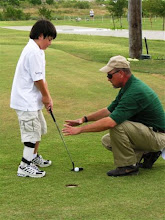MATT MOHI
TOM WISHON GOLF TECHNOLOGY
FITTING AND BUILDING MOI MATCHED GOLF CLUBS
©2009
Reprinted with Permission from TWGT
What is MOI?
• MOI is a measurement of how much force it takes to put an object into a rotational motion about a defined axis of rotation.
How does MOI relate to Golf?
• Many might be familiar with a “high MOI” driver head. This is the MOI of the head about it’s center of gravity.
• The MOI we are addressing here is the MOI of the entire golf club over its full length, as it is set in motion to rotate about the axis of the wrist cock release in the golf swing. (The shaft.)
What are we trying to achieve in an MOI Matched set?
• Consistency of the “weight to length feel” from club to club throughout the set.
• Clubs that require the same amount of force to swing resulting in a higher level of swing consistency. Good swings produce good shots.
Why is MOI Superior to Swingweight?
• MOI is a dynamic measurement of the “load” the golf club puts on the golfer. Swingweight is simply a ratio of the weight of a golf club based on a fulcrum point on a scale.
• Any weight added to a club will raise the MOI and put more load on the golfer. With swingweight measurements, any weight added to the grip side of the fulcrum point will LOWER the swingweight, but will not lower the amount of effort it takes to swing the club.
How does MOI compare to Swingweight?
• If we take an MOI matched set and measure all the clubs on a swingweight scale, as the clubs become shorter, the swingweight will increase slightly.
• For instance, if our MOI matched 6 iron is at a D1 swingweight, we will likely see a swingweight measurement of around D3 on the PW.
Is MOI a replacement for Frequency Matching?
• No, it is a replacement for swingweight matching.
• Frequency matching and MOI matching can be done side by side, just as frequency matching can also be done in a swingweight matched set.
Who benefits from MOI matching?
• Golfers of all skill levels have shown a preference for MOI matched sets – from beginners to elite golfers.
• For the less skilled golfer, the golf swing will be easier to learn and when all golf clubs in the set require the same amount of effort to swing.
• Elite golfers have noted the “sameness” of the swing feel from club to club throughout the set.
Who doesn’t benefit from MOI matching?
• The vast majority of golfers custom fit with MOI matched clubs, express a significant preference for their MOI matched clubs over traditional swingweight clubs.
• In very rare situations, golfers who have a keen sense of feel and advanced technique built around a swingweight matched set of irons prefer swingweight matching.
Can MOI matching be done on existing clubs?
• Yes, but if the set is already swingweight matched, the only option will be to match to the longest club’s MOI.
• This will require a significant amount of weight to be added to the short irons and will likely result in a MOI that is too high and does not fit.
• On an existing set of clubs, particularly if they were purchased “off the shelf”, it will probably be incorrect to assume that all the other fitting specifications are correct.
Why don’t the big, assembled club companies build their clubs MOI matched?
• MOI matching works best when a unique MOI is chosen, though custom fitting, that matches each individual golfer’s swing. Given the wide variety of swings, MOI matching can only be done when each club is built specifically for an individual golfer and not mass produced to “standard” specifications.
Reprinted with Permission from TWGT




